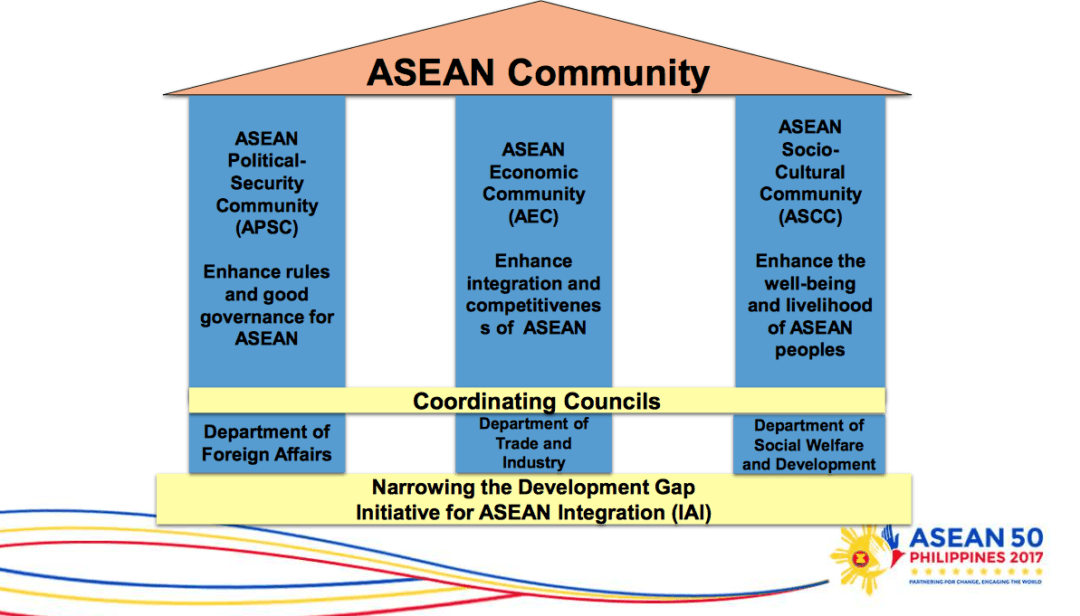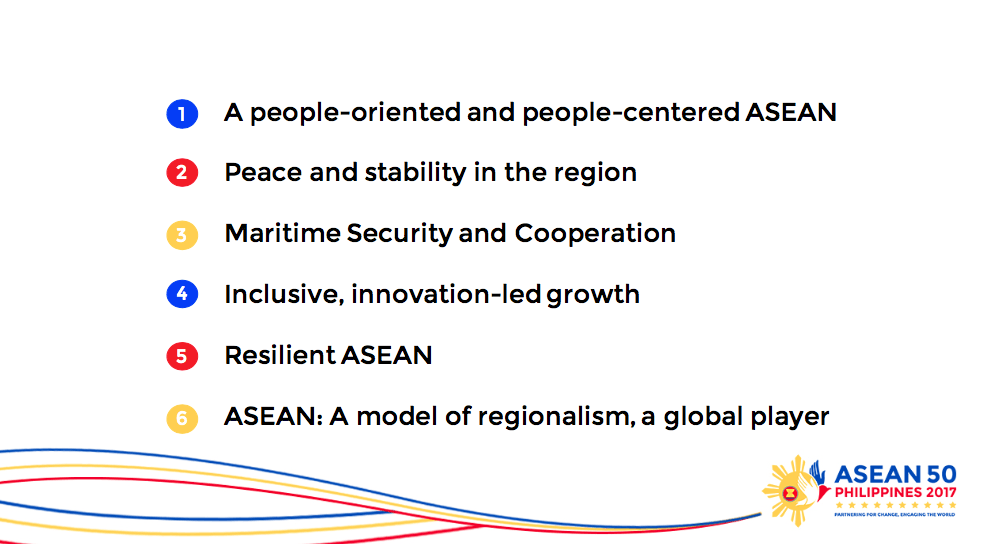When the Philippines assumed the ASEAN Chairship, the country launched the six thematic priorities for the three pillars of the ASEAN Community under the theme “Partnering for Change, Engaging the World.” Aside from the usual meetings, several festivities were organized, coinciding with ASEAN’s golden anniversary. In addition,information and cultural campaigns were lined up to improve the general public’s understanding of ASEAN.
For most Filipinos, knowledge of ASEAN is limited to social studies lessons. However, due to the West Philippine Sea dispute, awareness has increased. Practically speaking, many are aware of visa-free entry and popular tourist attractions within ASEAN. Beyond that, not much resonates—except perhaps the food. When we enjoy a bowl of pho, we think of Vietnam; tom yum reminds us of Thailand; and Hainanese chicken brings Singapore to mind.
I am writing this post to lay the foundation for my upcoming ASEAN-related articles. We cannot appreciate where ASEAN is heading unless we understand what the regional community has accomplished so far.
ASEAN Community Backgrounder
Though ASEAN was founded in 1967, it was only in 1997—after nine out of ten Southeast Asian countries had joined—when ASEAN Vision 2020 was adopted. This vision outlined a region that is outward-looking, peaceful, and prosperous, with dynamic development and caring societies.
During the 9th ASEAN Summit in 2003, now with all ten member states on board, the leaders agreed to establish an ASEAN Community aligned with Vision 2020.
In 2007, ASEAN decided to fast-track the establishment of the ASEAN Community, built on one vision, one identity, and one community. The ASEAN Community rests on three main pillars:

ASEAN Political-Security Community (APSC)
- A rules-based, people-oriented, people-centered ASEAN in a peaceful, stable, and prosperous region;
- A consolidated ASEAN Community;
- A dynamic, resilient, and harmonious community able to respond to social and economic vulnerabilities and non-traditional security threats;
- A Community capable of addressing challenges from within and beyond the region;
- A Community that maintains ASEAN centrality in regional mechanisms;
- Strengthened unity and cohesiveness to uphold ASEAN’s central role in regional concerns; and
- Enhanced dialogue and cooperation with external partners.
ASEAN Economic Community (AEC)
- A well-integrated and connected economy within the global system;
- A business-friendly, trade-facilitative, market-driven, and predictable environment that builds investor confidence;
- A region actively participating in global value chains and engaging in high value-added and knowledge-based activities;
- A competitive and dynamic region that inspires innovation, supports businesses of all sizes, and protects consumer rights;
- A community where economic integration benefits are shared equitably, including with MSMEs, youth, and women entrepreneurs; and
- A connected region with improved transport and infrastructure to enable efficient movement and productive cross-border collaboration.
ASEAN Social-Cultural Community (ASCC)
- An inclusive, people-centered community that promotes equitable access to opportunities and engages stakeholders in ASEAN processes;
- A sustainable community that advances social development and environmental protection to meet present and future needs;
- A resilient community able to adapt to current challenges and emerging threats; and
- A dynamic, creative, and adaptive community with a shared ASEAN identity that reflects regional values and aspirations.
Therefore, in 2015, ASEAN formalized the creation of the ASEAN Community and declared ASEAN 2025: Forging Ahead—its 10-year roadmap.
With the Philippines chairing ASEAN in 2017, the country helped bring the regional grouping closer to realizing its community vision. All activities were directed toward strengthening the three pillars by focusing on six thematic priorities.
The Six Thematic Priorities of the Philippines as ASEAN 2017 Chair

Pillar 1: ASEAN Political-Security Community (APSC)
- Peace and stability in the region
ASEAN’s commitment to peaceful co-existence and regional partnership. - Maritime security and cooperation
ASEAN’s adherence to the rule of law in resolving disputes and protecting maritime resources. - ASEAN as a model of regionalism and a global player
Showcasing ASEAN’s capabilities as an emerging global actor.
Pillar 2: ASEAN Economic Community (AEC)
- Inclusive, innovation-led growth
The Philippines facilitated discussions on business growth and regional capacity to meet global economic demands.
Pillar 3: ASEAN Socio-Cultural Community (ASCC)
- A people-oriented and people-centered ASEAN
The welfare of citizens at the heart of ASEAN’s priorities, recognizing that human well-being drives regional progress. - ASEAN’s resiliency
Building a sustainable, disaster-prepared region.
After going through this post, whenever ASEAN comes to mind, think of:
- Your peace and security—the region’s commitment to protect its people.
- Opportunities for enterprises—where trade in goods and services may eventually flow with fewer boundaries.
- A community where people’s rights and welfare guide decision-making.
Do you think the ASEAN Community’s aspirations are doable? Share your thoughts and let’s discuss.
💡 The ASK Takeaway
ASEAN’s journey toward regional cooperation aligns naturally with our ASK Framework — Align • Strengthen • Kickstart:
- Align national, organizational, and community goals with shared values such as peace, diplomacy, and sustainable growth.
- Strengthen regional capability through collaboration, responsible leadership, and people-centered initiatives across borders.
- Kickstart action by building unity in diversity—whether in teams, local communities, or ASEAN-driven programs.
Discover the full framework →
ASK Framework Cornerstone Page
Frequently Asked Questions
Why was ASEAN established?
ASEAN was formed in 1967 to promote regional peace, political stability, and cooperative development among Southeast Asian nations at a time of geopolitical tension.
What makes ASEAN’s 50th anniversary significant?
The milestone highlights ASEAN’s evolution—from early conflict-driven environments to becoming a respected regional community fostering diplomacy, integration, and shared progress.
How does the Philippine Chairship contribute to ASEAN’s goals?
Through agenda-setting, convening power, and thematic priorities, the Philippines helps guide cooperation in political-security, economic, and socio-cultural areas.
What can ordinary citizens do to support ASEAN initiatives?
They can engage in cross-cultural dialogue, verify information before sharing, participate in exchange programs, and advocate for peace, unity, and responsible regional citizenship.
How does ASEAN integration affect businesses?
Integration opens broader markets, encourages innovation, reduces barriers to trade, and increases opportunities for MSMEs, startups, and entrepreneurs across Southeast Asia.





